The histories of both Raymond Methodist Church and the St. Lawrence Catholic Church have been well documented in separate publications: Both The History of the Raymond Methodist Church, published in 1952 and updated in 1976 and St. Lawrence Church at Raymond: The Story of A Parish, published in 1981, cover the details of the events and people in immense detail. Instead of giving an account of each church's history seperately, the history of the churches of the Hathaway community below borrows facts from the detailed publications and reveals the history of sanctuary in the Hathaway community chronologically.
The quote on the cover of St. Lawrence Church at Raymond is “people make a parish.” Within the pages of that St. Lawrence church history is a passage written by Ms. Gayle G. Fontenot that explains the quote on the cover. The passage, no doubt, rings true for all churches in the Hathaway community:
“The true story of the parish is far more than tracing the establishment of buildings. The real story concerns the Faith of the people, their dedication, their hopes and dreams which are only partially realized in the brick and mortar that is boldly evident."
Along with the facts tracing the establishment of buildings, the history of Raymond Methodist Church and St. Lawrence Catholic Church, below, will illustrate certain dedicated people whose faith helped their respective church realize and keep a sanctuary for the Hathaway community.
19th Century
The first church in what would become the Hathaway community was established in 1894 as the Fairview Methodist Episcopal Church. Fairview was the name of the Raymond community for a time before a post office was installed. Then the postal service made the applicant, Gilbert Brown, choose another name because another community was already named Fairview. The post office was then registered as Raymond. The church then took that name. Shortly after Raymond was added to the postal route between Jennings and China, Calcasieu Parish established a right-of-way.
The church was born out of a Sunday school organized in 1881 by W.H. Cline at the home of Gilbert Brown, which then moved to the first one-room school house built in Raymond in 1888. Services and Sunday school were then held in the school house. The services were conducted by a church elder for a time, who preached every fourth Sunday. Later, a pastor from Jennings came out to Raymond every other Sunday afternoon to conduct a service.
Gilbert N. Brown, L.R. Parker, and Charles F. Taylor were the community leaders who became the charter trustees for the church they were organizing in Raymond. On January 31, 1894, the trustees for Raymond Methodist Episcopal Church paid one dollar in consideration for the property to Mr. Taylor’s brother, Willard, who lived in Oregon at the time. The deed was signed on July 23, 1894.
Work to build the church began in mid-August, 1894, as recorded in L.C. Bucklin’s diary that lumber was hauled by wagon from Jennings, which had come from the sawmills of Lake Charles. The general contractor was from Lake Charles. Parishioners supplied the labor. And Earl Brown and Charlie McVey hauled the benches from Watkin’s Wood Shop in Jennings by wagon with a team of oxen. The first service was performed by Reverend P.F. Drown.
1900 to 1930’s
In the first few decades of the Twentieth Century, Hathaway did not have a Catholic sanctuary. But this did not mean that Catholics had to travel to Jennings for Mass all the time. For many years, Mass was celebrated on a fairly regular basis at the home of Camille Gary, who lived across the road from the one-room school house at Hathaway. Catechism was also held at Mr. Gary's home and later, his son, Dolzie "Crip" Gary's home. The school house was also used for special events. On at least one occassion, the Catholic community in Hathaway organized First Communion in front of the school house. There was no trip to Jennings for lumber. The men in the community went to the woods along Bayou Nezpique and cut down trees, then took the trees to Edgar Fruge's sawmill nearby and had planks made. The planks were used to build a makeshift altar and benches for those attending.
Raymond Methodist Resurgence
Over the forty years after the Raymond Methodist Church was established, many, many pastors supplied regular services at the Methodist churches of both Raymond and Elton. In 1916, a parsonage was built for the Raymond church. By 1930, many of the early parishioners had passed on and church attendance had waned to the point no services were held for three years. The parsonage was being rented to a family. In 1933, Earl Brown, Herbert Bucklin, and H.E. Jester were asked to meet with the trustees of the Elton church to discuss the sale of the Raymond church.
The Raymond trustees left the meeting with one last opportunity to reorganize. The trustees contacted several interested citizens and set up a meeting on a Sunday in January. That day, rain was pouring so hard everyone stayed home. The same thing happened the next five times a meeting was set. It seems that each failed attempt to have a meeting to reorganize built resolve in that group. When they finally were able to meet, they started where the church began: they organized Sunday school.
A pastor from Welsh, Reverend John Deschner, learned of the Raymond church’s attempt to get started again and joined the effort. He held services every other Sunday and gave the try some energized leadership. With a reinvigorated parish, many joined in the effort to refurbish the building with new paint and a new roof for both the church and the parsonage.
Brother Krumnow
With attendance back up, a new pastor was assigned to the church. In 1935, Reverend Clarence B. Krumnow came to Raymond Methodist Church for a service every other Sunday from Ebenezar. Rev. Krumnow was born in Marlin, Texas, August 7, 1910. He went to college at Blimn Memorial College in Blimn, Texas, where he married Gertrude Lessman. He graduated from Southwestern Louisiana Institute with an A.B. Degree. Before being assigned to Raymond, in November, 1935, he was a pastor of the Ebenezer church south of Crowley, a pastorate which was taken in December, 1933, soon after his marriage, and as student-pastor in Paige, Texas. He was ordained a deacon in Houston, Texas, in November, 1936.
Brother Krumnow made the trip every other Sunday from Ebenezar until November, 1938 when he was assigned to Elton and moved into the parsonage at Raymond. He became an elder in San Antonio in October, 1939. That year he was also assigned to Basile. For many years, he was chairman of the town and country commission of Louisiana Methodist Conference which has as its aim the promotion of churches in rural fields. During his career at Raymond, he was cited for his work as a rural pastor by the bishop on numerous occasions. He served Elton until 1955, and Raymond and Basile until 1960. At the end of his service, he had the longest service record of any Methodist minister in the Louisiana Conference.
A protestant minister teaching in a predominantly Catholic community was something of a rarity, but as Brother Krumnow, loved by all religious groups, puts it: “Through my teaching I have been able to make many contacts for good in this rural community that I otherwise could not have made.”
Brother Krumnow was also a school teacher at Hathaway High School, beginning in March, 1944. There, he taught Social Studies and later English. He pioneered visual education at Hathaway by showing about a film a week on his personal projector to his history classes and many times to the entire student body. His wife, Gertrude, was a First Grade teacher at Hathaway High School and the Girls' basketball coach until about 1947. He was also leader of the Hathaway 4-H Club for many years. He saw many of his charges win Jeff Davis Parish and Louisiana honors and several went to the National 4-H Club Congress, held each Fall in Chicago. All of his children were outstanding 4-H Club members who raised prize-winning New Hampshire chickens and Jersey calves.
Photography and raising chickens rank highest in Brother Krumnow’s list of hobbies. He usually kept a flock of about 300 prized New Hampshire Reds in his half dozen shelters and large hen house. He switched to New Hampshires after having raised Leghorns. Relative to his poultry, the pastor explained that he was raised on a farm and “loved farm life.” “Care of my poultry flock has been for me the relaxation which golf, hunting, and fishing has been for my city colleagues. My interest in poultry has been a means of establishing things in common on this rural charge.”
Pine Island & Hathaway Missions
Several years before the resurgence of the Methodist church in Raymond, the Catholic Church in Welsh established a mission in Pine Island. The St. John the Evangelist chapel in Pine Island was built in 1927 on land given by the Houssieres. Farmers joining the mission gave proceeds from one acre of their crops and the Extension Society of Chicago donated $1,000.
The first pastor for the chapel was Father August Baudizzone. Several years later, Father Jules O. Daigle became the pastor for the chapel. Under his leadership, a new addition was built. Also, the idea to sell pews to families to raise funds was begun under Father Daigle.
A little over a decade after the chapel in Pine Island was built, Our Lady Help Catholic Church in Jennings established a mission in Hathaway. Led by Mr. Joe B. Landry, this mission was organized in 1938 at a meeting held at the then-vacated Crochet school in Panchoville. There, plans were made to raise funds to build a chapel. It was decided to hold a bazaar. Mr. Landry and Mr. Lucas Sonnier built the games that would be played. The bazaar raised $136. A year after Hathaway High School was built, the construction of the chapel at Hathaway began. Work was completed on October 12, 1940, to hold 200 people.
1940’s
In Raymond, Reverend Krumnow had been living in the parsonage for six years when a deepwater well was drilled for indoor plumbing. The deep well also affected the design of the educational building when it was built in 1942. The new annex had four classrooms, a recreation room, a modern kitchen, and a restroom. In 1948, more classrooms were added, the kitchen was expanded, and Reverend Krumnow got a study and an office.
Father Harry Pelous
In Hathaway, a new pastor was assigned to the Our Lady Help Catholic Church mission. Father Harry Pelous, the new assistant pastor in Jennings was assigned the responsibility of the Hathaway chapel in 1948. Later that year, Father Pelous led the effort to renovate and enlarge the chapel. But on Thursday, July 21, 1949, at about 4:30 in the afternoon, a tornado touched down in Hathaway and tossed the chapel and slammed it down 20 feet from its foundation, tearing off the steeple.
Just as he had in the renovation the year before, Father Pelous took the lead in planning the path to rebuilding. First was the salvage effort. Twenty or so men came each day to salvage as much material from the toppled building as possible. With the $2,000 from the Extension Mission Society in Chicago, work soon began on building a new church on a concrete foundation.
Father Pelous acted as the foreman. For the more specialized tasks of building a large structure, five carpenters were hired. But for the most part, the work was done by parishioners. Father Pelous even set up lights around the worksite so men could work at night after their work in the fields was done. The new building would hold 350 people. When the initial plans were drawn up, the total cost of the structure was $40,000. Because of the efforts of Father Pelous and the parishioners, the final cost for the structure was only $19,000.
1950’s and 1960’s
During construction of the new Catholic Church in Hathaway, Mass was celebrated in the Hathaway High School gymnasium. The first Mass in the new church was performed by Father Pelous on August, 6, 1950. On June 16, 1951, St. Lawrence Catholic Church received its charter. Mr. Joe B. Landry and Mr. Raoul Hebert were named as charter trustees. In July 1952, Father Pelous was transferred and Father Speyrer became the new pastor. The parish rectory was built in 1953.
In Pine Island, a parish hall was built beside the chapel in 1955. Again, the Houssiers stepped up with more land and donated the remnants of their abandoned cotton gin around the corner to supply materials for the structure. The building of the parish hall in Pine Island was shortly after a parish hall had been built in Hathaway. That parish hall was built next to the church using lumber from Mr. Edgar Fruge’s old sawmill. The Hathaway gym had recently been refloored and the old flooring was put into the hall.
On June 27, 1957, Hurricane Audrey hit South Louisiana with destructive force. The Raymond Methodist Church was blown off its foundation. Carpenters and parishioners worked quickly and restored the church to its foundation. More renovations were made in 1962. Four years later, in 1966, a committee was appointed to canvas the church membership on the idea of building a new sanctuary. The results were positive and an escrow account was set up to save funds for their new structure.
1970 to 1980
By 1970, Raymond Methodist Church’s escrow account had grown enough that a building committee was appointed. On May 6, 1970, Alan Thurmon presented plans of the proposed building to the Administrative Board. The cost would be $41,000. Ground-breaking ceremonies were held on October 11, 1970. The first services were held March 28, 1971.
Father John
In January 1972, Father John Poerio came to St. Lawrence. It soon became apparent big things were in store for the parish. Within a year of his arrival, Father John sanctioned a drive to buy a $4,000 organ. Mr. F.E. Landry had donated the original organ, which was first played by Gayle Ann Groth.
Father John’s next initiative was to consolidate the St. Lawrence church with its Pine Island mission. The path to consolidation was begun in April 1974, when Ms. Louise Hebert offered five acres at Raymond. Later that year, the Diocese granted permission to consilidate and a building committee was formed. The first step was to sell the property in Pine Island. In February 1975, the property was sold and the proceeds were deposited into a building fund. Mass continued at Pine Island until June 27, 1976.
The groundbreaking for the 10,000 square-foot, double-brick, steel-span church with a capacity of 400 was held Saturday, February 9, 1976. The new church at Raymond, with its adjoining parish hall, took seven months to build and cost $215,000. The Extension Mission Society stepped up again with $25,000 with the condition that the roof had to be finished by July 1976. In May 1976, the rectory and an acre of land at Hathaway were sold to add to the building fund.
The target date for the first Mass at Raymond was September 25, 1976, which was the date of the annual bazaar. The goal was met and the bazaar, chaired by Preston and Diane Blanchard, was a great success. Within two years, a Mass in thanksgiving was held outside in the back parking area for the burning of the note upon final payment of the parish debt. The note was put into the fire by Ms. Louise Hebert on October 23, 1978. In February 1980, construction of the parish rectory began. Father John moved in August 1980. In April 1980, St. Lawrence Catholic Church in Raymond was transferred from the Diocese of Lafayette to become part of the new Diocese of Lake Charles.
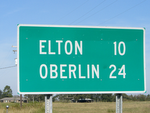
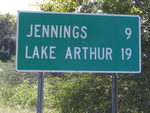
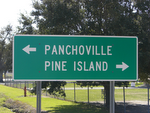
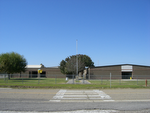
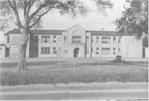
No comments:
Post a Comment